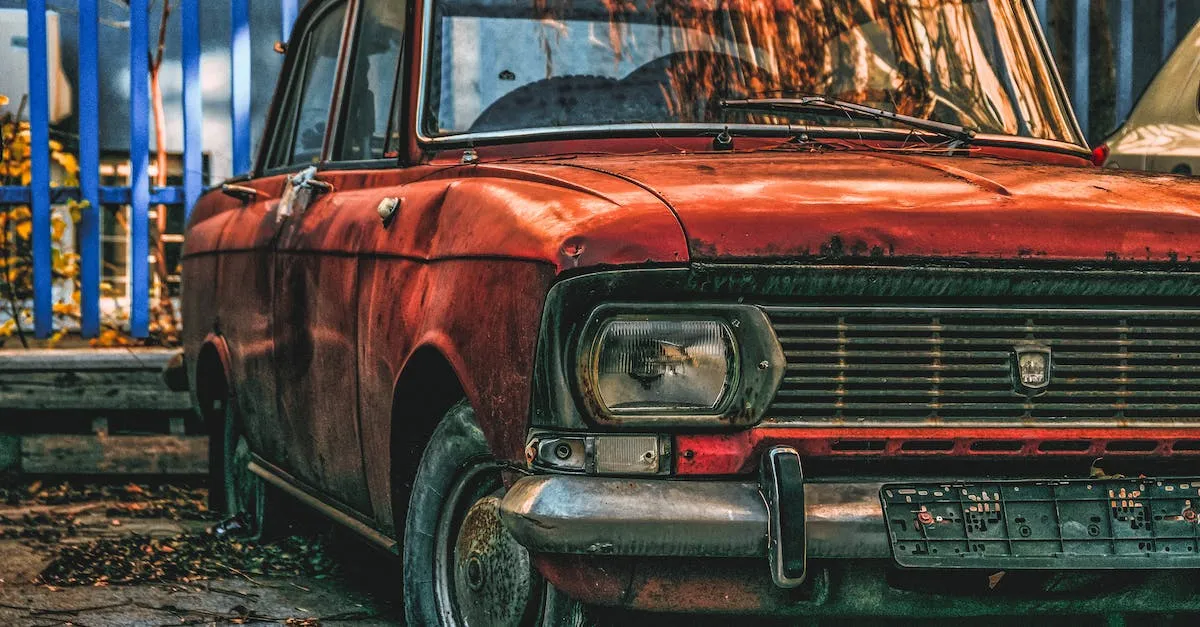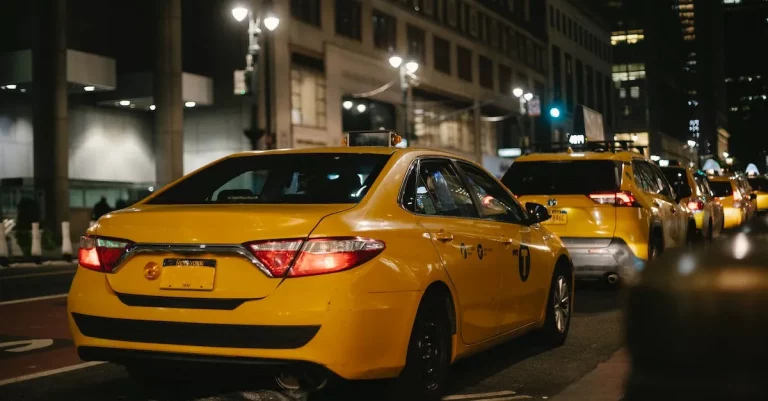Junking A Car Without A Title In California: A Step-By-Step Guide
If you have an old, non-working car sitting around your property that you want to get rid of, junking it is a great option. But what if you don’t have the title for the car anymore? In California, there are still ways to legally junk a car without a title by obtaining alternative paperwork and following other protocols. In this comprehensive guide, we’ll walk through the step-by-step process and requirements for junking a car without a title in California.
If you’re short on time, here’s a quick answer to your question: You can junk a car without a title in California by applying for a duplicate title, bill of sale or junk slip from the DMV. Some junkyards may also accept alternate ownership documentation like a registration renewal notice. You’ll need to show ID and proof of ownership.
In the sections below, we’ll go through all the possible options for proving ownership of a car without a title in California so you can junk it. We’ll cover getting duplicate titles and paperwork from the DMV, using alternate documents, having the car towed, filling out junkyard paperwork, and more. With the right preparation and documentation, you can remove that old car from your property by junking it, even without the original title.
Getting Duplicate Title Paperwork from the California DMV
If you find yourself in a situation where you need to junk a car without a title in California, obtaining duplicate title paperwork from the California Department of Motor Vehicles (DMV) is an essential step.
The duplicate title will serve as proof of ownership and allow you to legally transfer the vehicle to a junkyard or scrap dealer. Here’s a step-by-step guide on how to obtain duplicate title paperwork from the California DMV.
Applying for a Replacement Title
The first step in getting duplicate title paperwork is to apply for a replacement title with the California DMV. You can do this by completing the Application for Duplicate or Transfer of Title (Form REG 227) and submitting it to your local DMV office.
It’s important to note that there is a fee for obtaining a duplicate title, which varies depending on the situation. You may also need to provide additional documentation, such as proof of identification, proof of ownership, and any necessary lien release forms.
Once your application is processed, the DMV will issue you a duplicate title.
Requesting a Bill of Sale or Junk Slip
After obtaining the duplicate title, you’ll also need to request a bill of sale or a junk slip from the DMV. This document will serve as proof that you have legally transferred ownership of the vehicle to a junkyard or scrap dealer.
To request a bill of sale or junk slip, you can contact the DMV’s Vehicle Registration Operations Division or visit their website for more information.
It’s important to keep in mind that the process of obtaining duplicate title paperwork may vary depending on your specific situation and the policies of the California DMV. It’s always best to contact the DMV directly or visit their official website for the most up-to-date and accurate information.
For more information on obtaining duplicate title paperwork from the California DMV, you can visit their official website at www.dmv.ca.gov.
Using Alternative Ownership Documents
When it comes to junking a car without a title in California, having alternative ownership documents can be an effective solution. While a title is usually required, there are other documents that can help establish ownership and allow you to proceed with the junking process.
Registration renewal notice
If you have misplaced or lost your car title, one alternative ownership document you can use is the registration renewal notice. This document serves as proof that you are the registered owner of the vehicle.
It contains important information such as the vehicle identification number (VIN), your name, and address. While it may not be as strong as a title, it can still be accepted by some junkyards or salvage yards.
Vehicle history reports
Another alternative document you can use is a vehicle history report. Websites like Carfax and AutoCheck provide detailed information about a vehicle’s history, including its ownership records. By presenting a clean vehicle history report that shows your ownership, you can establish your right to dispose of the vehicle.
These reports can be purchased online and may require the VIN of the car in question.
DMV records
The Department of Motor Vehicles (DMV) keeps records of vehicle ownership and transactions. If you’re unable to locate your title, you can contact the DMV to request a copy of your vehicle’s ownership records. These records can serve as proof of ownership and can be used when junking a car.
Keep in mind that there may be a fee associated with obtaining these records, and it may take some time to receive them.
It’s important to note that the acceptance of alternative ownership documents may vary from junkyard to junkyard. Some may have specific requirements or preferences, so it’s always a good idea to contact them beforehand to confirm which documents they accept.
Preparing the Vehicle for Towing
Before you can junk a car without a title in California, it’s important to prepare the vehicle for towing. This involves taking a few necessary steps to ensure a smooth and hassle-free process.
Locating your car’s VIN
The first step in preparing your car for towing is to locate its Vehicle Identification Number (VIN). The VIN is a unique 17-digit code that is used to identify your vehicle. You can typically find the VIN on the dashboard, near the windshield on the driver’s side, or on the driver’s side door jamb.
It may also be listed on your vehicle registration or insurance documents.
Once you have located the VIN, make sure to write it down or take a clear picture of it. The VIN will be required when filling out the necessary paperwork for junking your car.
Disconnecting the battery
Another important step in preparing your car for towing is to disconnect the battery. This is necessary to prevent any electrical issues or potential hazards during the towing process.
To disconnect the battery, start by turning off the engine and removing the key from the ignition. Then, locate the battery in your vehicle. In most cars, the battery can be found under the hood. Use a wrench to loosen the negative (-) terminal first, followed by the positive (+) terminal.
Once both terminals are disconnected, secure them away from any metal surfaces to prevent accidental reconnection.
Remember to exercise caution when handling the battery, as it contains corrosive materials. If you are unsure about disconnecting the battery yourself, it is recommended to seek assistance from a professional.
By properly preparing your vehicle for towing, you can ensure a smoother process and avoid any potential issues along the way. Now that you know how to locate your car’s VIN and disconnect the battery, you’re one step closer to junking your car without a title in California.
Working With Junkyards to Junk the Car
When it comes to junking a car without a title in California, one of the most common options is to work with a junkyard. Junkyards are businesses that specialize in buying and selling old or damaged vehicles for their parts or scrap metal.
They can be a convenient solution for getting rid of a car that no longer serves a purpose. Here are some steps to consider when working with junkyards to junk your car:
Finding junkyards that accept non-titled cars
The first step is to find junkyards in your area that are willing to accept non-titled cars. Not all junkyards will be willing to work with cars without a title, so it’s important to do some research and find ones that specifically state they accept non-titled vehicles.
One way to find these junkyards is by searching online directories or using search engines. You can also reach out to local junkyards and ask if they accept non-titled cars.
It’s worth mentioning that some junkyards may have certain criteria or restrictions when it comes to accepting non-titled cars. For example, they may require proof of ownership or additional documentation to ensure that the car is not stolen.
It’s important to inquire about these requirements before proceeding.
Providing acceptable paperwork
Once you’ve identified the junkyards that accept non-titled cars, the next step is to provide the necessary paperwork. While a title is typically required to sell a car, there are alternative documents that can be used to establish ownership and sell the vehicle to a junkyard.
One option is to provide a bill of sale. A bill of sale is a legal document that proves the transfer of ownership from the seller to the buyer. It should include information such as the vehicle’s VIN (Vehicle Identification Number), make, model, and year, as well as the date of sale and both the seller and buyer’s contact information.
This document can help establish your ownership of the vehicle, even without a title.
Another option is to provide a certificate of destruction. This document is issued by the California Department of Motor Vehicles (DMV) and is typically used for vehicles that are being scrapped or dismantled.
It serves as proof that the vehicle will no longer be driven on public roads and is intended for recycling or disposal purposes. Junkyards may accept a certificate of destruction as a valid form of ownership documentation.
It’s important to note that the specific paperwork requirements may vary from junkyard to junkyard. Some may accept certain documents that others do not. It’s recommended to contact the junkyard in advance and inquire about their specific paperwork requirements to ensure a smooth and hassle-free transaction.
Completing the Junk Car Process
When junking a car without a title in California, there are several steps you need to follow to complete the process. These steps include turning over keys and ownership documents, canceling registration, and receiving payment.
Turning over keys and ownership documents
Before you can junk your car, you’ll need to gather all the necessary documents. This includes the keys to the vehicle and any ownership documents you have, such as a bill of sale or registration. Make sure to remove any personal belongings from the car before handing over the keys.
It’s important to note that junkyards and salvage yards will typically require proof of ownership before accepting a vehicle. If you don’t have the title, you may need to provide additional documentation to prove that you are the legal owner of the car.
Canceling registration
Once you have turned over the keys and ownership documents, it’s important to cancel the registration of the vehicle. This will ensure that you are no longer responsible for any fees or penalties associated with the car.
To cancel the registration, you will need to contact the California Department of Motor Vehicles (DMV) and inform them that you have junked the car. They will guide you through the process and provide you with the necessary forms to complete.
Receiving payment
After completing the necessary paperwork, you can expect to receive payment for your junk car. The amount you receive will depend on factors such as the condition of the vehicle and the current market value for scrap metal.
It’s important to shop around and get quotes from multiple junkyards or salvage yards to ensure you are getting the best price for your car. Additionally, make sure to choose a reputable buyer who will handle the process professionally and legally.
Remember, it’s always a good idea to do your research and understand the process before junking a car without a title in California. For more information, you can visit the official website of the California DMV at www.dmv.ca.gov.
Conclusion
While junking an old car without a proper title in California requires some extra steps, it can be done with the right preparation. By obtaining acceptable replacement paperwork and documentation of ownership, you can prove you own the car, have it towed away, and complete the junking process to remove unwanted vehicles from your property, all without the original title.








